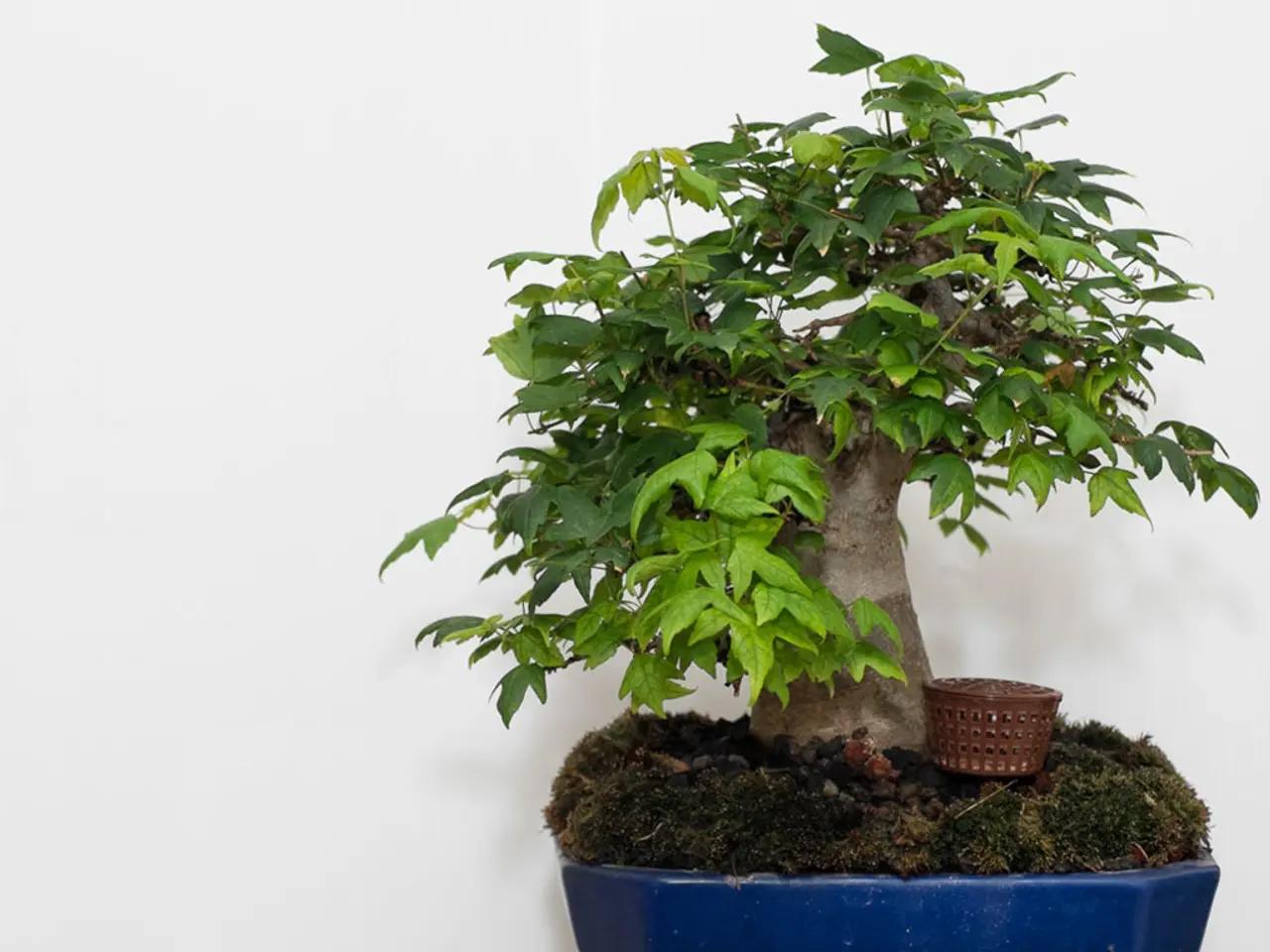Loss of leaves in Bonsai trees during winter season
In the world of bonsai, maintaining a healthy and beautiful tree is an art form. However, even the most diligent bonsai enthusiasts may encounter issues with leaf drop. This article aims to shed light on the common causes of leaf loss in indoor bonsai trees and provide some practical solutions.
Indoor bonsai trees, especially those from non-deciduous species, often lose their leaves during winter. This is primarily due to suboptimal indoor conditions for their species, particularly inadequate light and environmental stress [1][4][5]. As winter light levels are much lower than outdoors, especially in temperate zones, the reduced light limits photosynthesis, causing the tree to shed leaves to reduce energy demands.
Moreover, low humidity and dry indoor air, along with fluctuating temperatures, can lead to leaf drop as the tree perceives this as stress and drops leaves to conserve resources [3]. To combat this, it's essential to maintain humidity levels and ensure a stable indoor environment that closely resembles the tree's natural habitat.
Another significant factor is watering and feeding changes. Indoor tropical bonsai may need light feeding and careful watering to avoid both over- and under-watering, which can cause leaf drop [4]. It's crucial to strike a balance in watering and feeding practices, especially during winter months when outdoor bonsai enter dormancy.
Temperature fluctuations, especially drastic ones, can also lead to leaf drop. To fix this issue, move your tree to an area that gets the ideal light and temperature, supplement with artificial light, or provide some sort of sheer covering to limit direct light [2].
Pests such as aphids, spider mites, and scale can also cause leaf discoloration and fall off. Insecticidal soap or neem oil can be used to control these pests, while keeping humidity levels up can help deter spider mites [6]. Proper hygiene practices like cleaning tools between pruning sessions and sterilizing pots can help reduce the risk of fungal infections.
Determining the cause of bonsai leaf drop requires examining the soil, soil moisture, and overall tree health. Yellowing leaves on bonsai trees can indicate overwatering, underwatering, or nutrient deficiencies. On the other hand, brown leaves can be caused by underwatering, overwatering, improper light exposure, or nutrient deficiencies [7].
In summary, improving indoor lighting, maintaining humidity, and careful watering can significantly reduce or prevent leaf loss in indoor bonsai during winter months. By understanding the common causes of leaf drop and taking proactive measures, you can ensure your bonsai tree remains healthy and vibrant all year round.
For further resources and guidance on growing and maintaining a beautiful bonsai tree, visit The Bonsai Guide platform [8].
References: 1. Bonsai4me 2. Bonsai Tonight 3. Bonsai Empire 4. Bonsai Focus 5. Bonsai Bark 6. Bonsai Outlet 7. Bonsai Basics 8. The Bonsai Guide
Home-and-garden enthusiasts looking to grow and maintain a healthy bonsai tree should pay close attention to their indoor environment, especially during winter months. Low light, dry air, and fluctuating temperatures can all lead to leaf drop in non-deciduous bonsai species, making it necessary to maintain humidity levels and ensure a stable indoor environment that mimics the tree's natural habitat.







